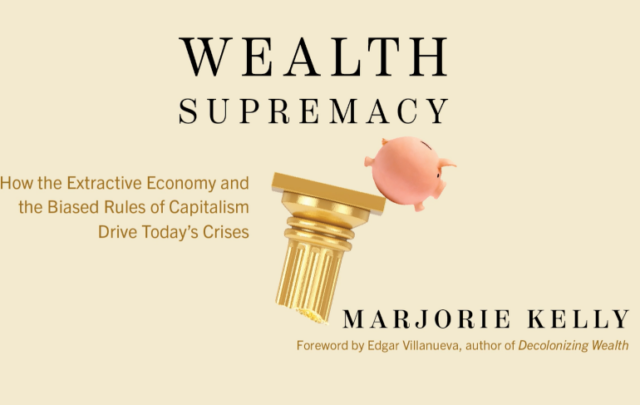Click on the headline (link) for the full text.
Many more articles are available through the Energy Bulletin homepage
Opinion: America in 2050 — Where and How We’ll Live
Joel Kotkin, aolnews
The presence of 100 million more Americans by 2050 will reshape the nation’s geography. Scores of new communities will have to be built to accommodate them, creating a massive demand for new housing, as well as industrial and commercial space.
This growth will include everything from the widespread “infilling” of once-desolate inner cities to the creation of new suburban and exurban towns to the resettling of the American heartland — the vast, still sparsely populated regions that constitute the majority of the U.S. landmass.
________________________
America in 2050 — Part 3
This is the third of a three-part series for AOL News adapted from Joel Kotkin’s new book, “The Next Hundred Million: America in 2050.” Part 1 of the series looked at America’s advantage in people over the next 40 years. Part 2 looked at how America will grow increasingly diverse.
________________________
In order to accommodate the next 100 million Americans, new environmentally friendly technologies and infrastructure will be required to reduce commutes by bringing work closer to — or even into — the home and to find more energy-efficient means of transportation.
Suburbs Rule
Suburbia — the predominant form of American life — will probably remain the focal point of innovations in development. Despite criticisms that suburbs are culturally barren, energy inefficient or suitable only for young families, 80 percent or more of the total U.S. metropolitan population growth has taken place in suburbia, confounding oft-repeated predictions of its inevitable decline.
This pattern will continue to the mid-21st century. The reasons are not hard to identify: Suburbs experience faster job and income growth, far lower crime rates (roughly one-third) and much higher rates of home ownership. While cities will always exercise a strong draw for younger people, the appeal often proves to be short-lived; as people enter their 30s and beyond, they generally prefer suburbs. This pattern will become more pronounced as the huge millennial generation — those born after 1983 — enters this age cohort.
Over the next few decades, however, suburban communities will evolve beyond the conventional 1950s-style “production suburbs” of vast housing tracts constructed far from existing commercial and industrial centers. The suburbs of the 21st century will increasingly incorporate aspects of preindustrial villages. They will be more compact and self-sufficient, providing office space as well as a surging home-based workforce. Well before 2050 as many one in four or five people will work full or part time from home…
(17 March 2010)
You can find out more about the book here.
Mayor Menino Kicks Off the Largest Public Housing Energy Efficiency Project in Nation’s History
PRNewswire
Mayor Thomas M. Menino announced today that Boston Housing Authority facilities across the City will receive $63 million in energy efficiency improvements. Mayor Menino announced the initiative, which is the largest public housing energy efficiency project in the nation’s history, at the Bromley-Heath Public Housing Development in Jamaica Plain.
The Boston Housing Authority has partnered with Framingham-based Ameresco to engineer, design, and implement water and energy conservation measures in approximately 4,300 apartments at 13 public housing developments throughout the City. The project will save the BHA more than $56 million in energy costs over the next 20-years, will result in hiring approximately 600 local union workers to implement the efficient measures, and reduce carbon dioxide emissions by 13,000 tons annually.
“This project is a great example of how we continue to ambitiously move Boston forward,” Mayor Menino said. “We’re saving energy, creating almost 600 jobs, saving the taxpayers’ money and improving low-income neighborhoods all at the same time. On all fronts, this project is clearly a win-win.”
Efficiency measures will include replacing water closets, showerheads and faucet aerators, installing energy efficient lighting, converting electric heat to gas, upgrading or replacing old central heating plants and installing co-generation and Photovoltaic Electric systems, Energy Star rated fiberglass windows, high reflective “cool” roof membranes and healthy apartment improvements. An extensive resident education, training and employment program will complement and reinforce the program over the life of the project.
“Projects like this prove that low-income housing can also be energy-efficient housing. We’re excited to be moving forward with green technology and upgrading our residents’ homes at the same time,” said BHA Administrator Bill McGonagle.
The agreement between BHA and Ameresco, called an energy performance contract, does not require the City to use a penny of taxpayer money upfront to fund the improvements. In addition to engineering, designing and implementing the efficiency measures, Ameresco is financing the improvements and will recoup their costs by sharing a portion of the savings over the life of the twenty-year contract.
Prior to Boston’s project, the two largest public housing authority energy efficiency projects were conducted by Denver ($20 million) and Chicago ($45 million). In both these instances, the work was performed under an energy performance contract.
The following developments are included in the contract: Bromley Park and Heath Street in Jamaica Plain, Commonwealth and Washington Street in Brighton, Franklin Field and Pasciucco in Dorchester, Holgate and Whittier Street in Roxbury, Lenox Street in the South End/Lower Roxbury, Old Colony in South Boston, Roslyn Apartments in Roslindale, Torre Unidad in the South End, and the Charlestown development in Charlestown.
(18 March 2010)
For green homes, should energy trump everything else?
Jonathan Hiskes, Grist
Pam Worner runs a business near Seattle helping home builders adopt “green” building practices. She’s fond of the phrases “tangled up in green” and “I don’t care what your countertop is made out of.” There’s a lot packed into those sayings—the first pinpoints a classic problem with green building, while the second suggests a solution.
“Tangled up in green” gets at the overwhelming array of eco-friendly building options. A given structure might have high-efficiency appliances, state-of-the-art insulation, a solar water heater, eco-certified hardwood floors, a permeable driveway, indigenous plants in its landscaping, easy access to a light-rail station and grocery store, and on and on. All these elements are well and good, but some are energy-efficiency features, others save water or improve its drainage, and another protects tropical forests halfway around the world. And some are definitely more significant than others.
“I don’t care what your countertop is made out of” reflects Worner’s conclusion about what building features are most important. If climate change is the biggest environmental threat to human welfare, then reducing energy use is the most important goal of green building—by far. This is the consensus view among green building experts (for a good explanation of the energy-trumps-everything argument, see Auden Schendler’s book Getting Green Done). A countertop made of recycled paper is nice, but a highly efficient furnace is going to pay much higher environmental (not to mention financial) dividends over the years. If homeowners can cut energy use, Worner figures, they don’t have to sweat every small thing.
So far so good. When I spoke with Worner at a Built Green trade show in Bellevue, Wash., last week, these struck me as helpful but orthodox ideas. But then she continued.
Her company, Green Dog Enterprises, advises construction companies to approach green building by helping their customers answer the question “What does green mean to you?”
What it means to customers turns out to be a lot of different things. The top priorities that they give often include indoor air quality, foreign-oil dependence, global warming, polar-bear habitats, rainforests, supporting local businesses, and reducing auto-dependency. Those could point to all different sorts of building features.
“You can’t do everything,” Worner said. “Most of the certification programs give equal weight to lots of different things. That gets really difficult, because you can’t do all of them. And sane homeowners would not want to do everything. You’ve got to help people feel good about what they’re doing, and that means helping them do what gives the biggest bang for the buck on what matters to them.”
But you steer them to the “right” priorities … right? You explain why energy efficiency matters more than anything else?
“That’s the ‘greener than thou’ condescension creeping in,” she said when I asked about this.
This seemed to contradict her energy-trumps-everything position. What if my personal “green” preference is exposed beams in my house from virgin old-growth trees? (Hypothetically, of course.)
“I’d say great. Let’s talk about salvage,” she said. Turns out there are divers who retrieve logs from the bottom of the Columbia River, where they fell off barges decades ago. If you’ve got the money, there are more sustainable options than you might think. Worner’s business helps builders and customers sort through those options (it also provides verification for several building certification programs)…
(16 March 2010)





